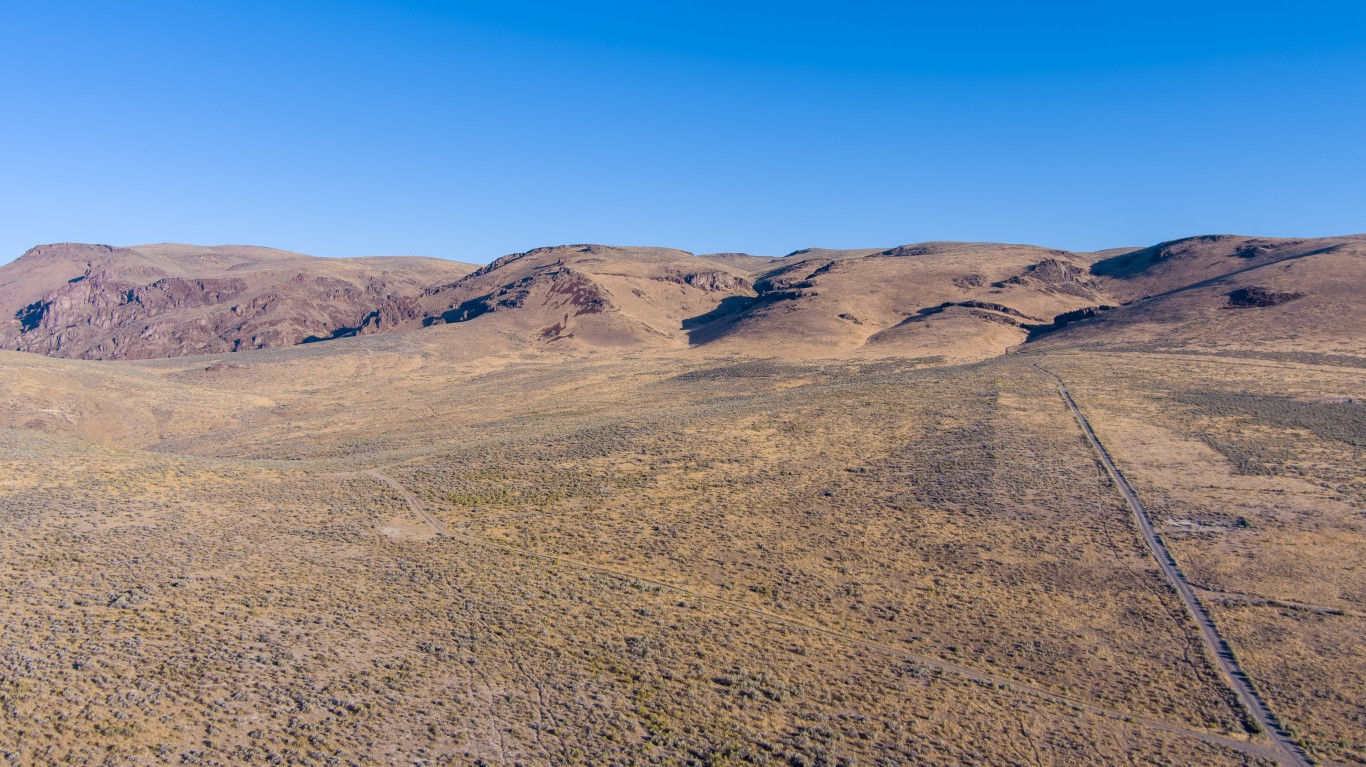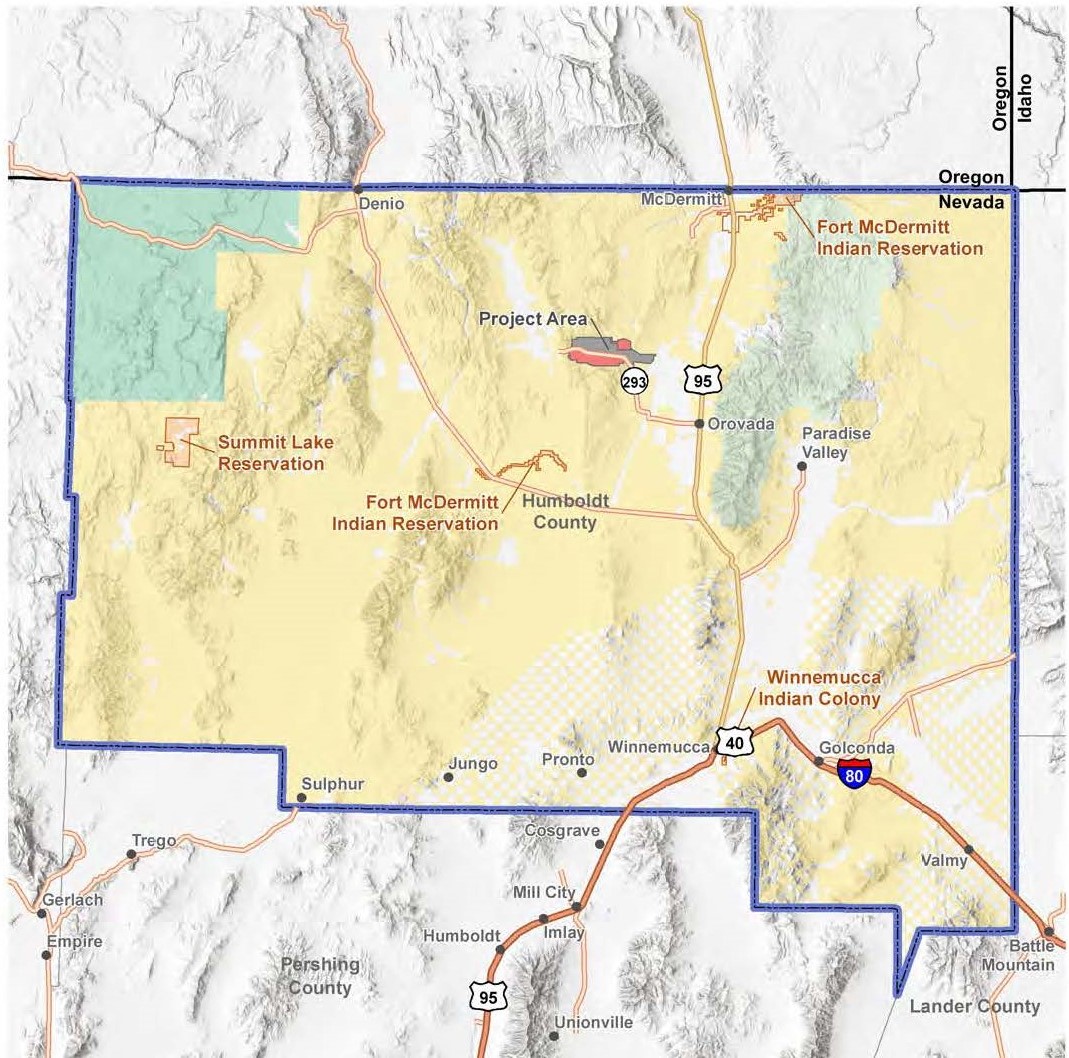
The majority of the world’s lithium is mined in Australia and Chile. In 2022, Australia produced 61,000 tons of lithium, and Chile produced 39,000 tons. Australia’s lithium is extracted by hard-rock mining methods; Chile’s lithium is extracted from evaporation ponds.
In North America, the largest known lithium deposit is located near the Nevada-Oregon border, with a measured resource of around 5.1 million metric tons (tonnes). That total has just been boosted by a factor of four to eight. (These are the 40 worst counties in America to live in.)
According to a research article in the August 30, 2023, issue of Science Advances Magazine, that deposit, known as the Thacker Pass project, could contain between 20 and 40 million tonnes of lithium metal, making it the world’s largest known deposit of the metal that is critical for the production of batteries for electric vehicles and electricity storage.
Lithium Americas sponsored this research, and the lead author is Thomas R. Benson, vice-president for global exploration at the company.
In early March, Lithium Americas was granted a lease to produce lithium from Thacker Pass and immediately commenced construction work on the project. In early February, a federal district court judge rejected claims from the Reno-Sparks Indian Colony, the Burns Paiute Tribe and other conservation groups and plaintiffs trying to block construction of the mine. In July, a three-judge panel of the 9th U.S. Circuit Court of Appeals rejected an appeal of the district court ruling.
What makes the Thacker Pass site so rich is the concentration of lithium in the illite rock at the southern end of the McDermitt caldera, a volcano that erupted some 15 million to 17 million years ago. According to the researchers, illite rock contains 7,250 parts per million (ppm) of lithium, more than double the concentration in the smectite rock at the north end of the caldera.
The amount of lithium in the bare rock from Thacker Pass ranged from 1.3% to 2.4% by weight. Lithium concentration in the salt deposits of Chile is around 0.6%. Once the rock is concentrated, the illite concentrate contains 12,050 ppm of lithium, by far the highest concentration of the metal among the clay rocks that were tested.
An average battery in an electric vehicle (EV) uses about 8 kg (about 17 pounds) of lithium. The U.S. Geological Survey estimates world reserves of around 26 million tons of lithium. That is enough lithium for around 3 billion average EVs (longer-range batteries use more lithium). And that is before the USGS factors in the new numbers from Thacker Pass.
General Motors will invest $650 million in Lithium Americas by the end of this year. In exchange, GM received exclusive access to first-phase production (40,000 metric tons per year) at Thacker Pass and the right of first offer on second-phase production (another 40,000 metric tons) at the site. First-phase production is scheduled to begin in the second half of 2026.
Are You Still Paying With a Debit Card?
The average American spends $17,274 on debit cards a year, and it’s a HUGE mistake. First, debit cards don’t have the same fraud protections as credit cards. Once your money is gone, it’s gone. But more importantly you can actually get something back from this spending every time you swipe.
Issuers are handing out wild bonuses right now. With some you can earn up to 5% back on every purchase. That’s like getting a 5% discount on everything you buy!
Our top pick is kind of hard to imagine. Not only does it pay up to 5% back, it also includes a $200 cash back reward in the first six months, a 0% intro APR, and…. $0 annual fee. It’s quite literally free money for any one that uses a card regularly. Click here to learn more!
Flywheel Publishing has partnered with CardRatings to provide coverage of credit card products. Flywheel Publishing and CardRatings may receive a commission from card issuers.
Thank you for reading! Have some feedback for us?
Contact the 24/7 Wall St. editorial team.

 24/7 Wall St.
24/7 Wall St.



